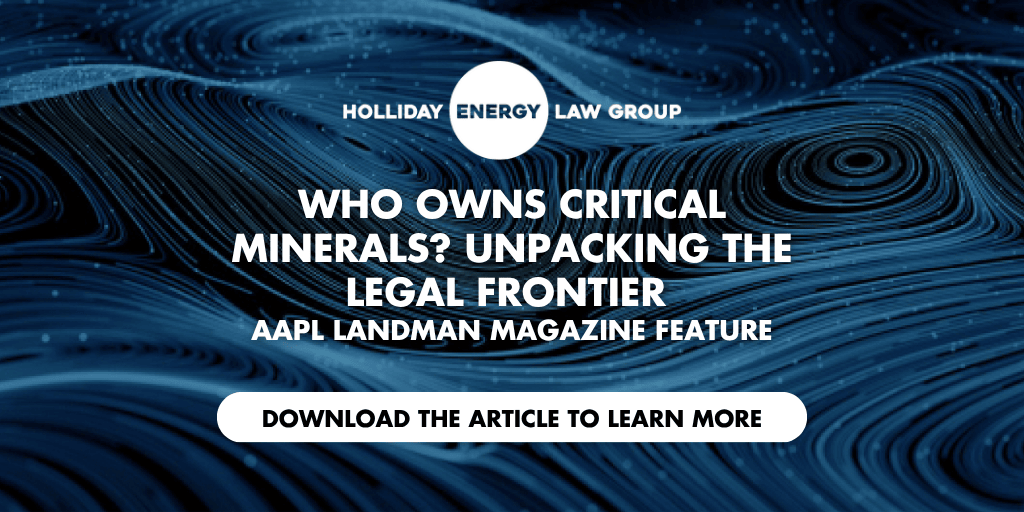Navigating New Mexico's Oil and Gas Landscape: Understanding Key Stakeholders
-1.png)
New Mexico, with its abundant natural resources, presents a myriad of opportunities in the oil and gas sector. However, the landscape is also characterized by a complex web of ownership and regulatory requirements that industry professionals must navigate. In this post, we delve into crucial aspects of New Mexico’s oil and gas landscape as outlined in the Landman’s Guide to New Mexico.
KEY STAKEHOLDERS IN THE MINERAL ESTATE
Federal Government
As the most consequential mineral owner in New Mexico, the Federal Government, through the Bureau of Land Management, plays a significant role in the administration and regulation of mineral resources.
State of New Mexico
The State Land Office and the Oil, Gas, and Minerals Division are essential players that manage state-owned lands and oversee the regulatory aspects of oil and gas extraction.
Private Fee Owners
Private individuals or entities owning the mineral rights are also significant stakeholders. Their participation is governed by various laws and regulations that protect both the mineral and surface estate owners.
Navigating the oil and gas industry in New Mexico requires a solid understanding of the rights and regulations governing mineral and surface estates, and the interplay between private, State, and Federal ownership.
The Dominance of the Mineral Estate
In New Mexico, the Mineral Estate holds dominance over the Surface Estate. This means that the mineral owner has the right to ingress and egress, and the right to reasonable use of the surface for mineral extraction. The Accommodation Doctrine applies, ensuring a balance between the mineral owner's rights and the surface owner's rights to use their land.
Understanding the Accommodation Doctrine
This doctrine came into focus with cases such as the sunken pump jacks case (see Texas' Getty v. Jones). While the operator has the right to drill and produce, it must accommodate existing surface uses.
The 2006 New Mexico Surface Owners Protection Act - SOPA
This act establishes a set of procedures that must be followed before a lessee may enter lands for oil and gas activities. It aims to protect the rights of surface owners.
SOPA Key Requirements:
- Provide a 5-day notice for non-surface disturbing activities and a 30-day notice for surface-disturbing activities.
- Offer compensation to the surface owner.
- In the absence of a timely agreement, the operator may post financial security with a New Mexico financial institution.
SOPA Implications:
- Operators must have a bond in place.
- They are required to pay damages to the surface owner.
- They must return the surface to its original condition upon decommissioning operations.
The Mineral Estate can be severed from the surface, creating a separate real property estate in the land. This estate includes:
- Right to Develop
- Executive Rights
- Bonus Rights
- Delay Rentals
- Royalty Rights
Furthermore, as the dominant estate, it retains the right of ingress and egress and reasonable surface use for exploration and production activities.
For a more detailed insight into New Mexico’s oil and gas landscape, download the Landman’s Guide to New Mexico.

